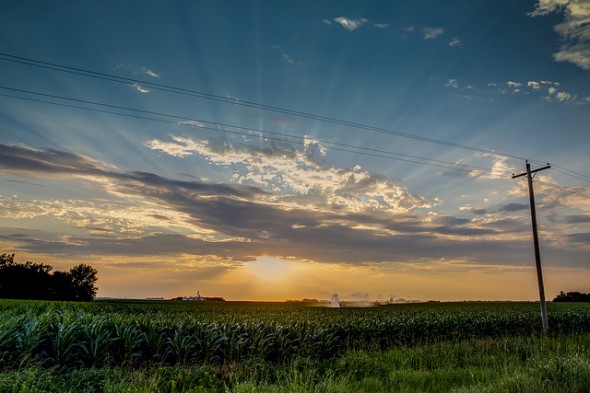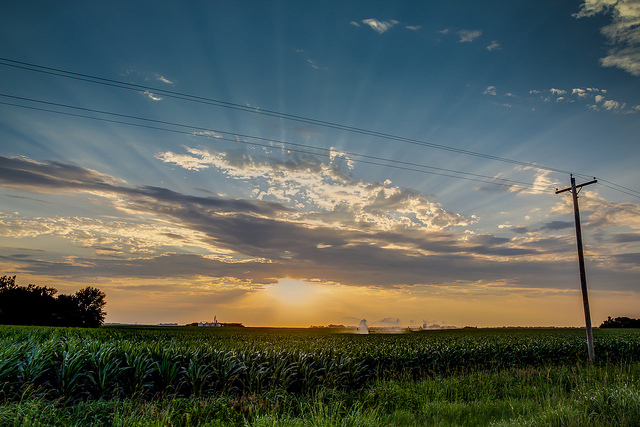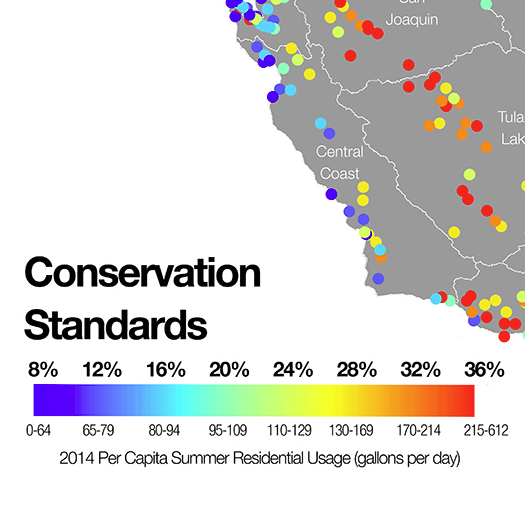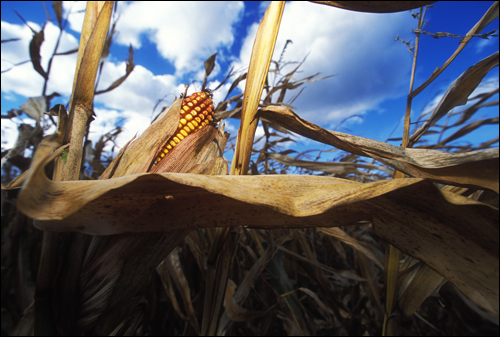One Year After Historic Drought, Good News From U.S. Corn Belt
A record harvest adds a new twist to the global food stocks roller coaster.

At this time last year, I was reporting grim news from the United States Corn Belt. The hottest summer on record and the most expansive drought in more than half a century combined to destroy much of what could have been a record harvest, and grain prices shot to record highs as a result. Fortunes have changed, and plentiful rains are nurturing what once again looks to be a record corn crop. The latest United States Department of Agriculture (USDA) estimates have U.S. farmers harvesting 354.3 million metric tons (13.95 billion bushels) of corn this season—a nearly 30 percent increase from last year.
Together with recovering wheat harvests in Europe—which were also hit by droughts last year—and favorable corn conditions in South America, the U.S. corn crop is expected to boost world cereal production to a new record, according to the July Cereal Supply and Demand Brief published by the Food and Agriculture Organization of the United Nations (FAO). The projected jump in supply has pushed down corn prices by 43 percent from last year’s record.
Even more optimistic is the forecasted rebound in world grain stocks, which have, due to a number of reasons that I wrote about in June, recorded a period of lows in the past decade not seen since the 1970s. Buoyed by this year’s harvests, overall grain stocks for 2014 are expected to increase 11.5 percent to 567.5 million metric tons, the highest level since 2001/2002, the FAO said.
The night-and-day difference between 2012 and 2013 reflects the vulnerability of harvests to increasingly severe weather, as well as the resilience of an increasingly global food system—a system that faces big changes over the coming decade. According to a 10-year outlook released in June by the FAO and the Organization for Economic Cooperation and Development, the pace of agricultural growth will slow as input costs rise and resources like land and water become scarcer. Food production, however, will continue to outpace demand. Moreover, the role of developing countries in providing the world’s food will grow significantly, a shift that brings both opportunities and challenges for water management.
Live in the U.S. Corn Belt? Have any thoughts about the future of the global food supply? Contact Codi Yeager
A news correspondent for Circle of Blue based out of Hawaii. She writes The Stream, Circle of Blue’s daily digest of international water news trends. Her interests include food security, ecology and the Great Lakes.
Contact Codi Kozacek










Leave a Reply
Want to join the discussion?Feel free to contribute!